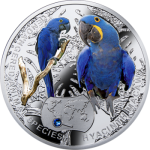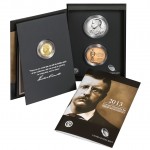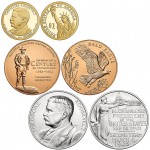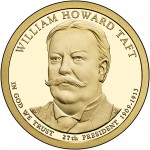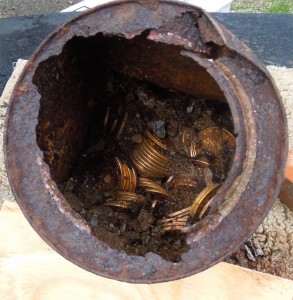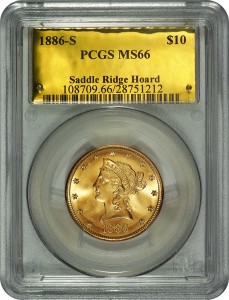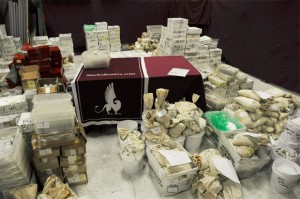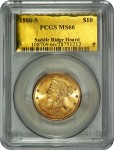Lame-Duck Still Doing Business
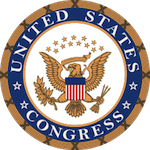 As expected, the lame-duck Congress is well on its way to passing numismatic-related legislation on its way out the door. While the four leaders and their representatives negotiate other business, the rest of the members kept themselves busy doing the usual end-of-session clean up work. Here is a quick update on December’s actions:
As expected, the lame-duck Congress is well on its way to passing numismatic-related legislation on its way out the door. While the four leaders and their representatives negotiate other business, the rest of the members kept themselves busy doing the usual end-of-session clean up work. Here is a quick update on December’s actions:
- H.R. 4104: Negro Leagues Baseball Centennial Commemorative Coin Act
LAST ACTION: Signed by President. Became Public Law No: 116-209. — Dec 4, 2020 - H.R. 1830: National Purple Heart Hall of Honor Commemorative Coin Act
LAST ACTION: Presented to President. — Dec 11, 2020 (Not signed, yet) - H.R. 1923: Circulating Collectible Coin Redesign Act of 2020
(Women’s History and Nineteenth Amendment Centennial Quarter Dollar Coin Program Act)
PASSED THE HOUSE OF REPRESENTATIVES — Sep 22, 2020
PASSED THE SENATE with an amendment — Dec 17, 2020
LAST ACTION: Message on Senate action sent to the House. — Dec 18, 2020 - H.R. 6192: 1921 Silver Dollar Coin Anniversary Act
PASSED THE HOUSE OF REPRESENTATIVES — Sep 22, 2020
PASSED THE SENATE with an amendment — Dec 17, 2020
LAST ACTION: Message on Senate action sent to the House. — Dec 18, 2020 - H.R. 7995: Coin Metal Modification Authorization and Cost Savings Act of 2020
PASSED THE HOUSE OF REPRESENTATIVES — Dec 2, 2020
LAST ACTION: Received in the Senate and assigned to committee — Dec 3, 2020
H.R. 1923 was passed in the Senate with an amendment that prevents the U.S. Mint from selling the coins at a loss. H.R. 6192 saw the Senate replace almost all of the wording rather than making small tweaks in order to fix what amounts to clerical errors. Even though both amendments are technical changes and do not effect their purpose, the bill has to be returned to the House of Representatives for approval. If the House agrees with the Senate’s changes, then they will pass the bills and send them to the President for his signature. If not, the law requires that the changes be negotiated by a Conference Committee consisting of members from both chambers.
It is unlikely that a Conference Committee is necessary for these bills. Either the House will pass them by unanimous consent or they will die at the end of the session. The thought of another circulating quarters program is not exciting (H.R. 1923) but there are many numismatists who would like a 2021 Morgan and Peace Dollars.
As an interesting idea, if H.R. 6192 passes and the U.S. Mint strikes 2021 Morgan dollars, instead of a privy mark to celebrate the Carson City Mint, how about a counterstrike? Have a “CC” counterstruck on the eagle’s chest similar to the “EB” counterstrike on the Brasher Doubloon? That would be something different.
SPRING HAS SPRUNG!
For those of us in the United States, this has been a brutal winter. Whether you have been buried in snow, had to endure droughts that have not been seen in over 100 years, or record cold temperatures, there are many who would like to forget this past winter. Then there are people like me who would like to see their snow measured in feet and not inches!
Whatever your feelings are regarding the Vernal Equinox, it officially occurred at 4:57 PM UTC (or 12:57 PM on the United States east coast). Maybe you can try the semi-annual tradition of balancing an egg on its end. Good luck!
A Final 2013 Purchase
After receiving the email, I could not remember what I ordered from the U.S. Mint that they are charging my credit card? I remember I made my annual order of presidential coin covers, but I received those. A visit to the U.S. Mint’s online catalog jarred my memory to remembering that I ordered the 2013 Theodore Roosevelt Coins and Chronicles Set. A quick visit to the webpage noted that the items will be available for shipping on March 18, 2014. I received the notice on March 18, 2014. This means the set should arrive within a week!
I usually do not buy the Coins and Chronicles sets because the subjects do not interest me. However, I have always been a fan of Teddy Roosevelt. My first exposure to Roosevelt was as a youngster growing up on Long Island, I was fortunate to have taken a few field trips to Sagamore Hill, his home in Oyster Bay, New York. My other exposure to TR was visiting the memorial to him at the American Museum of Natural History on Central Park West in Manhattan. Every time I go to the AMNH, which still my favorite museum, I make sure I stop in the TR Memorial.
Roosevelt initiated the “Golden Age of American Coin Design.” Using his bully pulpit, he held the designs of the U.S. Mint Chief Engraver Charles E. Barber in contempt. In fact, Roosevelt had called Barber’s designs “atrociously hideous.” Roosevelt ordered coinage whose designs were more than 25 years old to be redesigned. Roosevelt was a fan of sculptor Augustus Saint-Gaudens and asked him to help redesign American coinage.
After Saint-Gaudens died of cancer, Roosevelt continued to look to revitalize U.S. coinage. He seized upon Abraham Lincoln’s 100th birthday to redesign the small cent. He was steered to Victor David Brenner, whose bust of Lincoln was used as the model for the new Lincoln Cent first issued in 1909. Not only was Lincoln the first president to appear on a circulating coin, but Brenner’s obverse design is still in use today.
Roosevelt called his coinage redesign his “pet crime.”
Up until the release of the 2013 Roosevelt dollar, the president who is credited with starting the renaissance of American coinage design has not been honored on a United States coin. His image has appeared on coins but as part of an image of Mount Rushmore. You can find Roosevelt on the 1991 Mount Rushmore silver dollar and clad half dollar. Mount Rushmore also appeared on the reverse of the 2006 South Dakota State Quarter. Roosevelt’s image does not appear on the 2013 Mount Rushmore quarter.If you want to learn more about our 26th president and have the time to read three books that were writing in Victorian-era prose, I would highly recommend the three books by Edmund Morris: The Rise of Theodore Roosevelt that covers his life up until his presidency, Theodore Rex about his presidency, and Colonel Roosevelt that discusses his life after he leaves office in 1909. For those who want a little lighter reading and in one book, I recommend Mornings on Horseback by David McCullough.
I have not yet read The Bully Pulpit by Doris Kearns Goodwin that covers the era of Roosevelt and his successor, William Howard Taft. Between Roosevelt and Taft, it was a time of bridging the Victorian era with the industrial age. It was a very interesting and important time in U.S. history.
Taft is another president that does not get the respect he deserves. Aside from pulling the country out of the recession of 1909, Taft was the only president to have been appointed to the United States Supreme Court. He was the 10th Chief Justice serving from 1921 through 1930. For numismatists, Taft was responsible for convincing congress to pass the appropriate legislation that formed the Commission of Fine Arts. Although Roosevelt created the CFA by executive order, Taft felt that was not constitutional. He asked congress to codify the CFA’s existence into law.For those in need of a good trivia question, Taft was the last president with facial hair, sporting a very cool looking handle-bar mustache.
ANA technology update and a shout out
Once you open your copy, you might want to check out the article on page 67. It is written by your favorite numismatic blogger talking about the work being done by the ANA and the Technology Committee on the new ANA website.
Please read the article, but I want to reiterate two points:
- The technology committee is made up of ANA members who are volunteering their time and expertise to ensure that everything regarding the building of the website is in the best interest of the ANA. Long time readers know that aside from my background in information security, I had been a critic of how the ANA was technologically unsophisticated. They benefit by bringing in members, especially those of us who have been critical, to help them move forward in a way to best benefit the organization.
- The work being done by the ANA staff in Colorado Springs has been tremendous. First, it was a great idea by then Executive Director Jeff Shevlin to hire (the now defunct) Amos Digital to really kick start the process. Amos Digital did an excellent job helping the ANA manage the request for proposal (RFP) process and coordinating the review and selection process. It is unfortunate that Amos Press disbanded Amos Digital because they had a great team.
Since becoming Executive Director, Kim Kiick has really done a wonderful job in working with the Board, the Tech Committee, and the selected vendor. In fact, Kim and her staff has worked so well with the new vendor that they have found additional cost savings while maintaining the standards we techies want to ensure is maintained throughout this process.
Writing an article for The Numismatist is more difficult than a blog post because of space limitations. There is only so much that can be said in a limited amount of space. Since I do not have those limitations here, I want to take the opportunity to praise the work of the one person who has really done a tremendous job for the ANA.
For those who do not know, Jake Sherlock is the magician behind the scenes making the cobbled together technology work in trying to make the ANA appear technologically friendly. From helping to maintain the website whose software is sorely out of date to figuring out how to broadcast meetings from the ANA convention, Jake has worked hard with very little to do a lot for the association.
What makes this even more awe inspiring is that Jake does not have a technical background. I am sure he will correct me, but I think he told me his background is in communications and public relations. He should be commended by everyone associated with the ANA for stepping into this role and making a big difference.
Once the new technology is in place it will be fun to see what Jake can do with modern tools.
Thank you, Jake!
X your own spot
We do not follow maps to buried treasures and X never ever marks the spot.
Professor Indiana Jones could have been talking to coin collectors in 2014 instead of his 1940s-era archaeology class at the mythical Marshall College in “Indiana Jones and the Last Crusade.”
Those watching the coin-related news on both sides of the Atlantic Ocean (“the pond”) may have noticed that finding buried treasure appears to be a consistent theme. Even though some dealers and grading services have complained about the lack of fresh inventory to excite collectors, could new era of coin collecting be fueled by treasure hunters?
This week, Stack’s-Bowers announced they have been searching through a hoard they call the West 57th Street Collection. Stack’s has reported that the 30-ton hoard could be worth $15-20 million and includes coins of all types including nearly 10,000 1909 VDB Lincoln cents. Coins will be sold by Stack’s-Bowers via their online auctions with the rarities being sold at their larger events like the auction at the Whitman Baltimore Expo and American Numismatic Association World’s Fair of Money.
Two weeks ago, Kagin’s made public the finding of the Saddle Ridge Hoard, a hoard of 1,427 gold coins found in cans buried under a tree somewhere in California. Although the names of the finders of the coins is being kept secret, it was reported that the tin cans filled with 19th century gold coins were found by a couple walking their dog.
A man from Victoria Island, British Columbia found an English shilling from around 1551 using a metal detector. It is the oldest coin found on the west coast of Canada. Local experts theorize that the coin was brought to the area by Sir Francis Drake who was sent on a secret exploring mission in 1557. Allegedly, Drake gave the coins to the native peoples as proof the English laid claim to the land. The man who discovered the coin is recently retired who took up metal detecting hunting as a new hobby.
Another metal detector enthusiast in found a 1700-year-old Roman gold coin in Wiltshire, England. The coin was struck for Emperor Licinius I in AD 313 and struck in Trier in Germany, the site of the main mint of the western Roman Empire. The coin was to be sold at auction in December somewhere in London and estimated to bring £30,000 (approximately $48,000). Unfortunately, there have been no follow-up news reports regarding the sale of this coin.
In June 2013, it was revealed that a man found 159 gold coins 20 minutes into his first ever outing with a metal detector. The hoard was found in a field near St. Albans in Hertfordshire, England buried about 7-inches below the surface in October 2012. Publicity for the hoard came on the day a formal inquest was held to determine the ownership of the coins as required by British law. Inquests are publicly announced so that claims may be made. Anyone who can prove a legal claim to the hoard may challenge the ownership. As with most cases of ancient coin finds, only the press comes to gawk at the new found fortune.
What makes this a remarkable story is that the man who found the coins was 20-mintues into his first metal detector hunt. Not sure he wanted to take up metal detecting as a hobby, the man purchased a low-end model recommended for people exploring the hobby or families doing casual metal detecting. For this man, it paid off when he found an ancient Roman solidus estimated to be about 1,600 years old just 7-inches below the surface. The hoard is estimated to be worth £100,000 (approx. $156,000).
With the exception of the West 57th Street Hoard, the other treasures were accidental finds. Whether you are a couple out walking your dog or taking your metal detector out for the first time, it appears that buried treasure still exists.
This does not even account for the finding of sunken treasure like the $77 million of silver found Odyssey Marine discovered at the bottom of the Atlantic Ocean in July 2013. The silver was found on what is supposed to the British steamship SS Gairsoppa, a ship that was sunk by a torpedo from a German U-boat while transporting the silver from England to India in 1941. As with most large finds, this discovery is tied up in court proceedings.
Does this mean that there are no treasures for others to find? That is difficult to say because we do not have maps and, with the exception of the movies, X does not mark the spot.
If you want to try to find a treasure, you need to consider what the world was like in years past and not today. Was the area you are searching once a forest that was not inhabited or was the area that is a park or forest today once a village, town, or small city? Is there a trail that was one a well-travelled trade road or could that trade route be buried under your neighborhood?
A friend who goes out regularly with a metal detector says that most of the finds are not made by dumb luck. Successful metal detector hobbyists take the time to research the areas which they are interested to understand what was once in that location. Before going on a search, they will go to libraries or town halls to look at past records. This gives an insight into what was once in the area they want to search so that they can concentrate their limited time to get the best reward.
Although we are interested in finding coins, metal detectors will find anything metallic including old tools, pottery that was glazed with metal-based enamel, weapons, spent bullets, armament, and anything else made of metal. The friend mentioned above found a lost town in the Midwest. It appears to have been the proverbial waterhole along the railroad, a stop along the tracks for the steam engines to refill their water tanks. The town died after diesel locomotives made the need for a water stop unnecessary. They did find coins but many were unremarkable or common for the period but kept with the town that has been turned into a tourist attraction.
If you decide to do some treasure hunting and find something, let me know. I would love to bring the story to the community.
POLL: How much will the Saddle Ridge Hoard sell for?
In the middle of the 20th century, recognized sales expert Elmer Wheeler came up with the phrase, “Don’t sell the steak, sell the sizzle.” Wheeler says, “it’s the sizzle that sells the steak and not the cow.” He has a point. How many relatively common coins sell at higher prices because of their pedigree. How many coins have sold for more than expected because they were ex-Eliasberg, ex-Norweb, ex-Bass, or ex-Ford pedigrees? Right now, the Saddle Ridge Hoard has a lot of sizzle. Even in a few months at an auction, can you imagine the interest that would be generated by opening these coins up for public bid?
For this week’s poll, I am not going to ask if you are interested in purchasing a coin from the Saddle Ridge Hoard. Given the sizzle, I am sure many people would love to own one of the coins. Rather, given what may be seen as an unusual way of selling these coins, how much do you think the collection will realize? Of course if you have a different opinion, add it as a comment. I would love to know what you think!
How much do you think the Saddle Ridge Hoard will bring in?
Total Voters: 47

